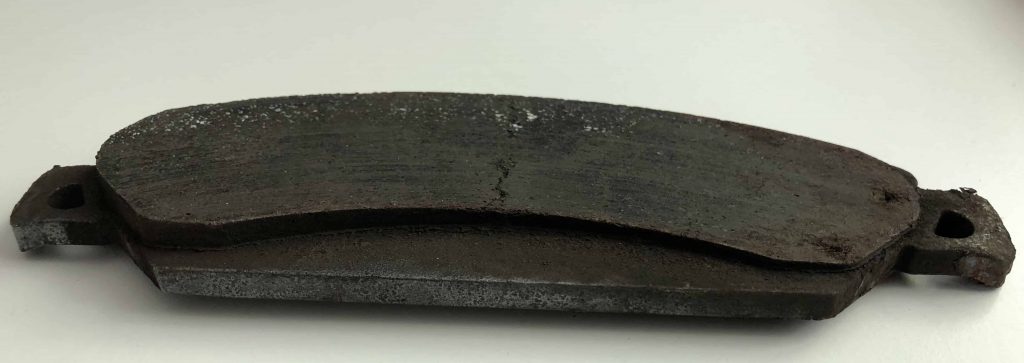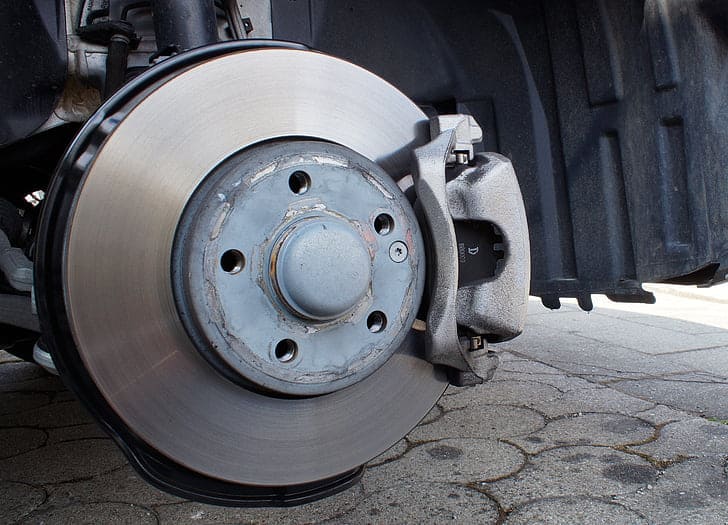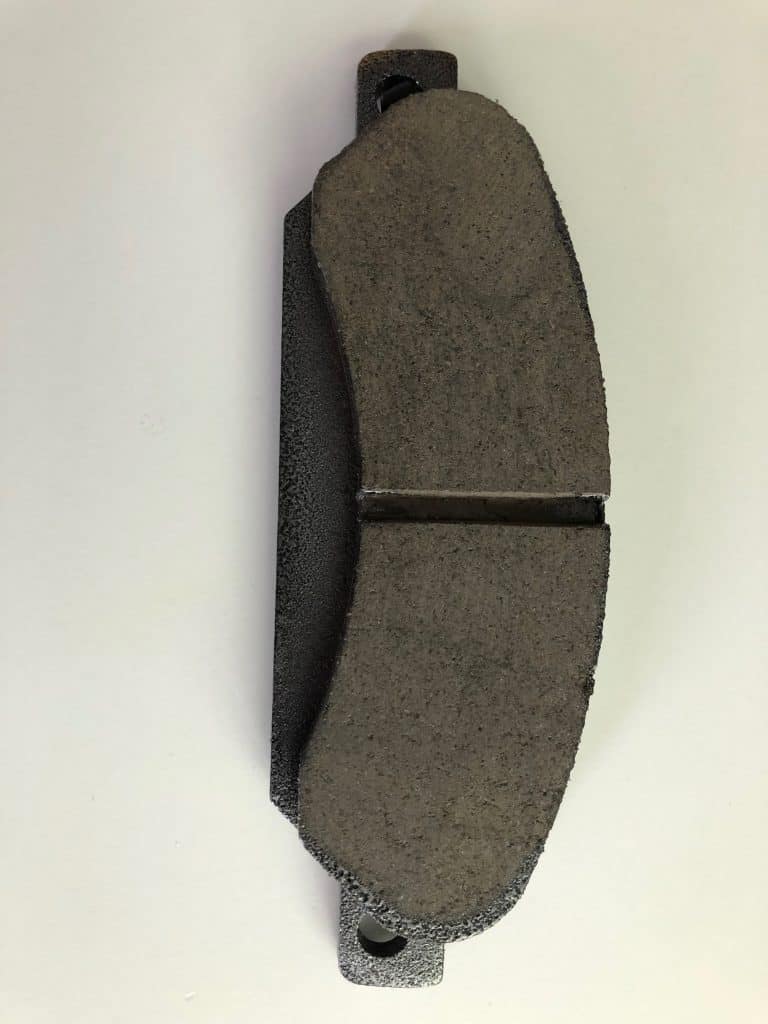Ever had that sinking feeling when you hit the brakes and your car just keeps rolling? You might be dealing with glazed brakes, my friend.
Glazed brakes occur when the brake pad material hardens and forms a smooth, glassy surface, reducing friction with the rotor and compromising your vehicle’s stopping power.

Picture this: you’re cruising down a steep hill, riding the brakes like there’s no tomorrow. Suddenly, your trusty stoppers aren’t so trusty anymore. That’s glazing in action, folks. It’s like your brake pads decided to put on their dancing shoes and slide across the rotors instead of gripping them.
But don’t worry, you’re not doomed to a life of white-knuckle driving. With a little know-how and some TLC for your braking system, you can kiss those glazed brakes goodbye. Stick around, and I’ll show you how to spot the signs, fix the problem, and keep your stoppers in tip-top shape.
Key Takeaways
- Glazed brakes result from overheating and reduce your vehicle’s stopping power
- Regular brake maintenance helps prevent glazing and ensures optimal performance
- Proper braking techniques can significantly extend the life of your brake system
Unveiling the Mystery of Glazed Brakes
Glazed brakes can sneak up on you like a ninja in the night, leaving you wondering why your trusty steed isn’t stopping like it used to. Let’s lift the hood on this slippery situation and see what’s really going on with your brake pads.
Symptoms of Glazed Brakes
You might notice your car taking a leisurely stroll when you’re trying to stop in a hurry. That’s because glazed brake pads can significantly reduce braking performance. It’s like trying to stop on an ice rink wearing roller skates!
Listen up for some telltale sounds too. If your brakes are squealing like a pig at a bacon factory, that’s a red flag. Glazed pads love to make a racket.
Feel that vibration in the steering wheel or brake pedal? It’s not your car doing the cha-cha. Glazed brakes can cause shudders that’ll rattle your fillings loose.
The Science of Glazing
Now, let’s get our geek on and talk science. Brake pad glazing happens when things get too hot under the collar – or in this case, under the wheel.
When you brake hard or ride those pedals like a nervous driving instructor, you’re cooking up a storm. The extreme heat causes the brake pad material to crystallize and harden.
A visual inspection can reveal the truth. Glazed pads look smoother than a fresh jar of skippy. They’ll be shiny too, like they’ve been polished by an overzealous detailer.
Remember, your brake pads should have some texture. If they’re slicker than a greased pig, you’ve got yourself a glazing problem, my friend.
Factors Leading to Glazed Brakes

Glazed brakes can sneak up on you like a ninja in the night, but fear not! Understanding what causes this slippery situation will help you keep your stoppers in tip-top shape.
Poor Driving Habits
You know that friend who always has one foot on the gas and one on the brake? Yeah, don’t be that guy. Riding the brakes is a surefire way to turn your pads into shiny, useless hockey pucks. It’s like constantly rubbing sandpaper on your favorite jeans – eventually, you’ll wear right through them!
Dragging the brakes down long hills is another no-no. It’s tempting to ride that pedal all the way down, but your brakes will be screaming for mercy. Instead, try engine braking or pulsing the pedal. Your brakes will thank you, and you’ll avoid that embarrassing smoke show at the bottom of the hill.
Mechanical Culprits
Sometimes, it’s not you – it’s your car. Sticky brake calipers can keep your pads pressed against the rotors, even when you’re not braking. It’s like your brakes are giving the rotors a never-ending hug. Cute, but not great for performance.
Worn brake hardware can also lead to glazing. Those little clips and springs might seem insignificant, but they’re the unsung heroes of your brake system. When they get tired, your pads can’t move freely, leading to uneven wear and glazing.
Lastly, don’t forget about those rotors. If they’re warped or have uneven surfaces, your pads won’t make proper contact. It’s like trying to high-five someone with a wavy mirror – you’ll miss every time!
Impact on Driving Safety

Glazed brakes can turn your smooth ride into a white-knuckle adventure. You’ll notice some scary changes in how your car responds when you hit the brakes.
Increased Stopping Distance
You know that heart-stopping moment when you need to slam on the brakes? Well, with glazed brakes, you might as well be trying to stop a runaway freight train. Your stopping distances will increase dramatically, turning what should be a quick stop into a nail-biting slide.
Imagine trying to stop for a red light, only to find your car keeps rolling like it’s auditioning for a soap opera. That extra distance could mean the difference between a close call and a fender bender.
Effects on Braking Performance
Your brakes should grip like a determined toddler on a lollipop. But with glazing, they’ll be about as effective as trying to stop your car with a wet sponge.
You might notice:
- Reduced friction between pads and rotors
- Inconsistent braking power
- A pedal that feels harder to press
Glazed brake pads can make your braking as unpredictable as a cat’s mood. One moment you’re stopping fine, the next you’re praying to the automotive gods for mercy. It’s like playing Russian roulette with your brakes, and that’s not a game you want to win – or lose.
The Fine Art of Brake Maintenance
Keeping your brakes in tip-top shape is like conducting a symphony of safety. It’s all about timing, precision, and a little elbow grease. Let’s dive into the nitty-gritty of brake care that’ll keep you stopping on a dime.
Regular Check-Ups
You wouldn’t ignore that weird noise your kid makes when they’re sick, right? Same goes for your brakes. Listen up for any squealing, grinding, or that annoying high-pitched whine. These are your brakes’ way of crying for help.
Get yourself a good flashlight and take a peek at those brake pads every 10,000 miles or so. If they’re thinner than a quarter inch, it’s time to replace them. Don’t be shy about giving your rotors a good once-over too. Look for any deep grooves or uneven wear.
Check your brake fluid while you’re at it. If it’s darker than your morning coffee, it’s time for a change. Clean fluid keeps those calipers happy and functioning.
The Right Way to Replace Parts
When it comes to replacing brake parts, think of it like cooking a gourmet meal. You want the best ingredients, and you don’t want to rush it. Always go for quality brake pads that match your vehicle’s specifications.
Start by cleaning everything thoroughly. A bit of brake cleaner goes a long way in removing that nasty brake dust. When installing new pads, make sure they sit snug in the calipers. No wobbling allowed!
Don’t forget to lubricate the caliper slides. It’s like giving your brakes a spa day. They’ll move smoothly and evenly, preventing uneven wear.
Lastly, always replace rotors in pairs. It’s like buying shoes – you wouldn’t just replace one, would you? This ensures even braking and keeps your ride smooth as butter.
Solving Glazed Brake Dilemmas
Got glazed brakes? Don’t fret! There are ways to get your stopping power back on track. Let’s explore some DIY fixes and when it’s time to call in the pros.
DIY Fixes for the Hands-On Driver
Ready to tackle those glazed brakes yourself? Grab your sandpaper and let’s get to work!
First, remove the wheel and caliper to access the rotor. Now, it’s time to remove that pesky glaze. Gently sand the rotor surface in a circular motion. Don’t go overboard – you’re not trying to resurface the whole thing!
Next, check your brake pads. If they’re shiny and smooth, they need attention too. Use fine-grit sandpaper to rough up the surface. This helps restore grip.
Remember, high temperatures caused this mess. To prevent future glazing, avoid excessive braking on long descents. Give your brakes a break (pun intended) and let them cool down.
When to Seek Professional Help
Sometimes, DIY just won’t cut it. If you’re dealing with severe glazing or you’re not comfortable working on your brakes, it’s time to call in the experts.
A pro can determine if your brake pad material is still good or if it’s time for replacements. They’ll also check your master cylinder and other brake components for any issues.
If your rotors are warped or severely damaged, they may need machining or replacement. This isn’t a job for your average backyard mechanic.
Remember, your brakes are crucial for your safety. If you’re unsure about anything, don’t hesitate to seek professional help. Better safe than sorry when it comes to stopping power!
Frequently Asked Questions
Glazed brakes can be a real head-scratcher for many drivers. Let’s dive into some common questions to help you understand what’s going on with those shiny stoppers of yours.
Are glazed brakes a cause for concern on the road?
You bet they are! Glazed brakes can significantly reduce your stopping power, making your ride a bit more thrilling than you’d like. It’s like trying to stop on an ice rink with roller skates – not exactly the safest situation.
How can you tell if your brake pads have become glazed?
Keep your ears peeled for some telltale signs. If your brakes start singing like a squeaky mouse or growling like a grumpy bear, they might be glazed. You might also feel some vibrations, as if your car is doing the cha-cha when you hit the brakes.
What’s the secret to fixing up those shiny glazed brakes?
Time to roll up your sleeves! The fix usually involves replacing those glossy pads and giving your rotors a good once-over. It’s like giving your brakes a spa day – out with the old, in with the new.
In the fast lane of racing, do glazed brakes affect performance?
You’d better believe it! In the world of racing, glazed brakes are about as welcome as a flat tire. They can turn a pole position into a pit stop faster than you can say “checkered flag.”
What’s cooking under the hood to make those brakes come out glazed?
It’s all about the heat, baby! When brakes get too hot from overuse, they can start to glaze like a donut. Imagine your brake pads are marshmallows – too much heat, and they’ll get all gooey and useless.
Can glazed brake pads decide to pack up and leave on their own, or do they stick around?
Don’t worry, your brake pads won’t ghost you like a bad date. They’ll stick around, but they won’t be doing their job properly. You’ll need to show them the door and bring in some fresh faces to get your stopping power back on track.
